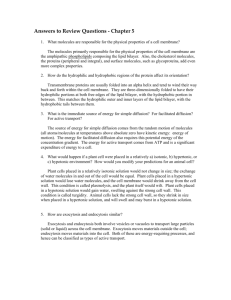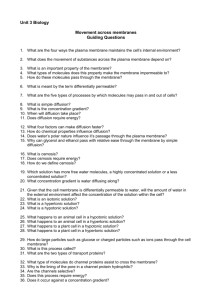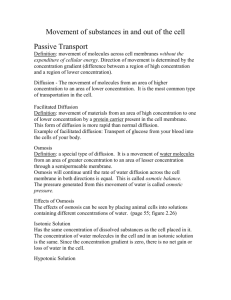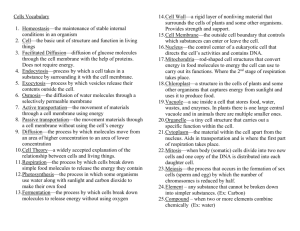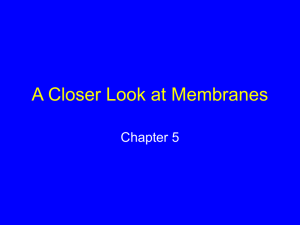Transport SG answers
advertisement
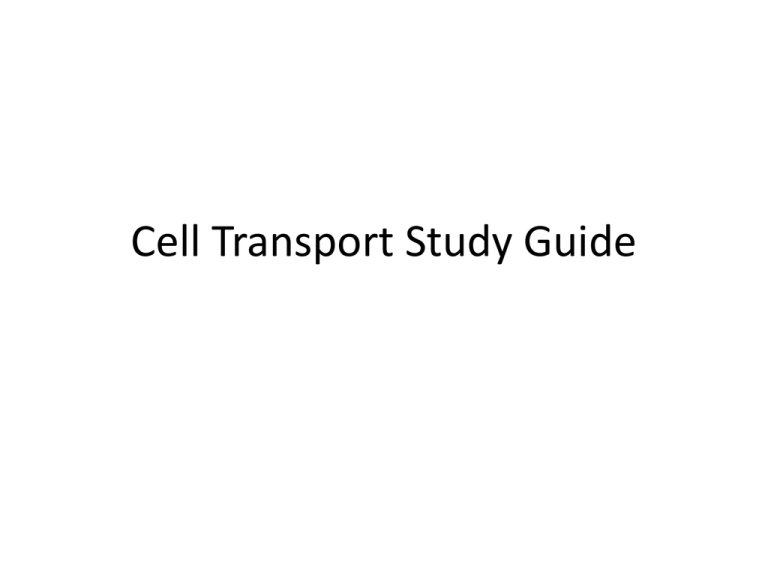
Cell Transport Study Guide 1. Which forms of transport do NOT require energy? • Diffusion • Osmosis • Facilitated Diffusion *All of these are passive! 2. Which forms do require energy? • Endocytosis • Exocytosis • Sodium-Potassium Pump *All of these are active! 3. At the end of the diffusion process, the concentration of substances on each side is _____________. • Equal 4. Draw an illustration of diffusion. • On right side of board. • Sugar molecules start out lumped together and gradually move until they are evenly spread out. 5. Define diffusion. • Movement of molecules from an area of high concentration to an area of low concentration. 6. Red blood cells have a salt concentration of 0.9% • In a solution of 1.2% salt, they will shrink because water moves out of the cell. • In a 0.9% saline solution, they will remain the same because the two are equal. • In pure water, they will swell because water will move into the cell. 7. Define osmosis. • Diffusion of water molecules. 8. In the diagram, which direction will the substances move? • From left to right (high conc. to low conc.) 10. A cell will swell when it is placed in a __________ solution. • hypotonic 11. A cell will shrink when placed in a _____________ solution. • hypertonic 12. A cell will remain the same when placed in an ___________ solution. • isotonic 13. What is the difference between active and passive transport? • Active requires energy and moves molecules against their concentration gradient. • Passive does not require energy and moves molecules down their concentration gradient. 14. Proteins that act like selective passageways in the cell membrane are known as ___________. • Channel proteins 15. What kind of molecules can pass through the cell membrane unaided? • Small, nonpolar 16. During the egg demo, the egg gains mass and became swollen. What is the explanation for this? • It was placed in a hypotonic solution and water moved into the egg. 17. What is the energy source for active transport? • ATP 18. Molecules that are too large to be moved through the membrane can be transported into the cell by _______. • Endocytosis 19. Ridding the cell of materials by discharging the materials in vesicles is called ______________. Exocytosis 20. Describe the Sodium-Potassium pump. What type of transport is it? • A protein in the cell membrane that moves Na and K ions against their concentration gradient. It requires ATP, so it is active transport. 21. Describe the lipid bilayer. • Drawing on board! • It is a double layer of phospholipids arranged tail to tail, making up the cell membrane. 22. Define concentration gradient. • A difference in concentrations. 23. What is equilibrium? • Balance A cell membrane is ______ permeable because it allows for the passage of some substances but not others. • Semi or selectively



